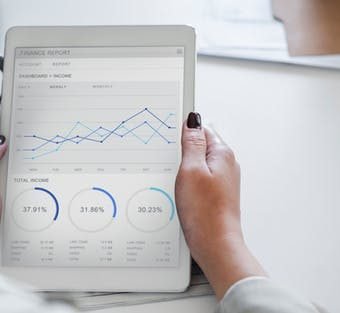If you are practicing in a healthcare environment that requires you to use electronic charting, you know that while it is a modern marvel for documentation, it can also be considered a horrible hindrance to the nurse experience.
According to the literature, nurses spend up to 50% of their shifts documenting in the electronic health record (EHR). With this, attitudes towards the amount of time it takes to use the technology may spark nurse thinking that it decreases time away from patient care and disrupts daily workflows, lowering both patient and nurse satisfaction. While this may seem daunting, nurses can come to understand the EHR has a higher purpose and value. If we look into what else we do with the EHR, this perception can change.
There is more to charting within an EHR than just documenting the care nurses provide. Why? Data. The data put into the EHR with every care interaction can be used for safety and quality initiatives to benefit both patients and nurses and improve care using emerging technologies.
The rich data holds trends and patterns that without analysis, cannot identify our triumphs and where we fall short in providing care. EHR data, along with other data sources from devices, sensors and enterprise resource systems, are precious resource nurses can mine and evaluate for life-saving initiatives, including monitoring Core Measures indicators, decreasing hospital-acquired conditions, reducing errors, adverse events and near misses in practice, and developing population-based health programs.
These data can also be used to utilize new technologies to improve communication among care teams, determine appropriate staffing, reduce inefficiencies and waste that render non-productive time and enhance patient throughput and transitional care. Data-driven innovative technologies that extend EHR clinical decision support now alert nurses more accurately and quickly of patient deterioration, disease progression, inappropriate lengths of stay, and risk of being readmitted to the hospital.
With multiple, clean sources of data feeding into tech-based systems and applications, nurses can provide better care that allows more patient and person-centered high-value interactions to engage the patient and improve their care quality and experience, through more proficiently providing better health education, therapeutic communication, discharge planning the ability to follow disease-specific standards and pathways.
EHR data flows inside and outside of the hospital and clinic walls. Data, used judiciously, extends connected care with patients enabling virtual care, optimizes billing cycles that can improve the cost of healthcare services, and proves nurses value and influence in the industry by being added to the database of national nursing indicators. Data capture also allows technology vendors to partner with nurses to develop better care delivery applications and serves to meet the standards of mandated programs aimed at improving the way we use all healthcare technologies.
By charting in the EHR, you are furthering practice today and setting the stage for the future of healthcare. Your clinical documentation is an essential contribution to how data is used to feed the healthcare ecosystem for safer, higher-quality and more innovative care delivery. Using data to its fullest extent is invaluable to patient outcomes and just as beneficial for your experience. Consider your 50% of time documenting an investment, and a worthy contribution to improving healthcare.
Want to better understand the use of TDC? Join the Nurse Evolution community and learn more about how technology, data, and creativity improve nursing care delivery. Get blogs and resources that will guide you on your journey to new ways of caring.

